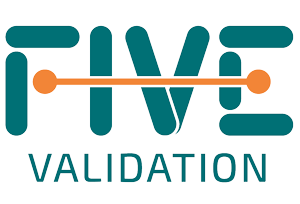Return on Investment – Paperless Validation Approach
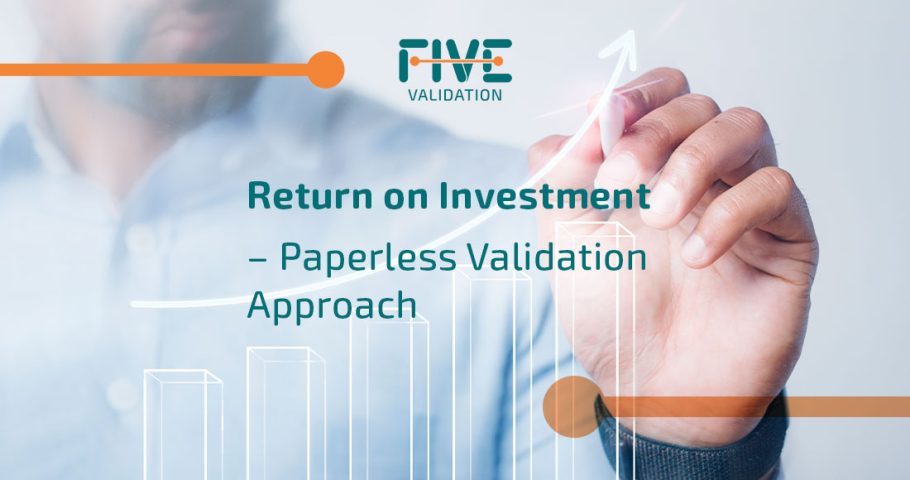
Return on investment, or ROI, is a financial metric used to measure the returns obtained from a given amount of invested resources.
GO!FIVE® software, a paperless validation solution includes knowledge inserted in its database collected by the FIVE Validation team since 2008. FIVE is an important provider of validation services for cases where there is an occasional absence of specialists for projects.
The ROI case study we are presenting here is from FIVE Validation, which has been able to get metrics that are interesting, because it has spent 10 years validating on paper and has transformed its processing using GO!FIVE®. Currently, 98% of our projects are based on this format, and 1/3 of our client base has already migrated to paperless validation.
Based on this knowledge and the effort devoted to each type of validation/qualification, FIVE has developed a ROI spreadsheet that estimates the amount of effort to bring the site into compliance, comparing the traditional method with the digital method.
In addition, the spreadsheet brings several insights such as the amount of resources needed, return on investment, etc. The idea is to support our client in the projection and evaluation of investments for validation/qualification and business decision making.
The ROI study proposed by the spreadsheet is a conservative estimate that only considers resource costs, printing costs, and the number of validation/qualification cycles. In other words, we use as a basis only the obvious and easily visible costs. However, there are several hidden costs that weigh more heavily on the company, as well as regulatory and sanction risks, which can be mitigated by using a system that is fully in line with national and global guidelines for validation and qualification.

Cost of poor quality
The visible part is already challenging, but the hidden, submerged part also deserves attention, as it consumes human, financial, time, and energy resources, and can impact the company's image and value.
The solution to these problems is fully aligned with digital platforms such as GO!FIVE®, which decreases validation time and costs, reduces regulatory risks, increases efficiency, data integrity, compliance, and sustainability.

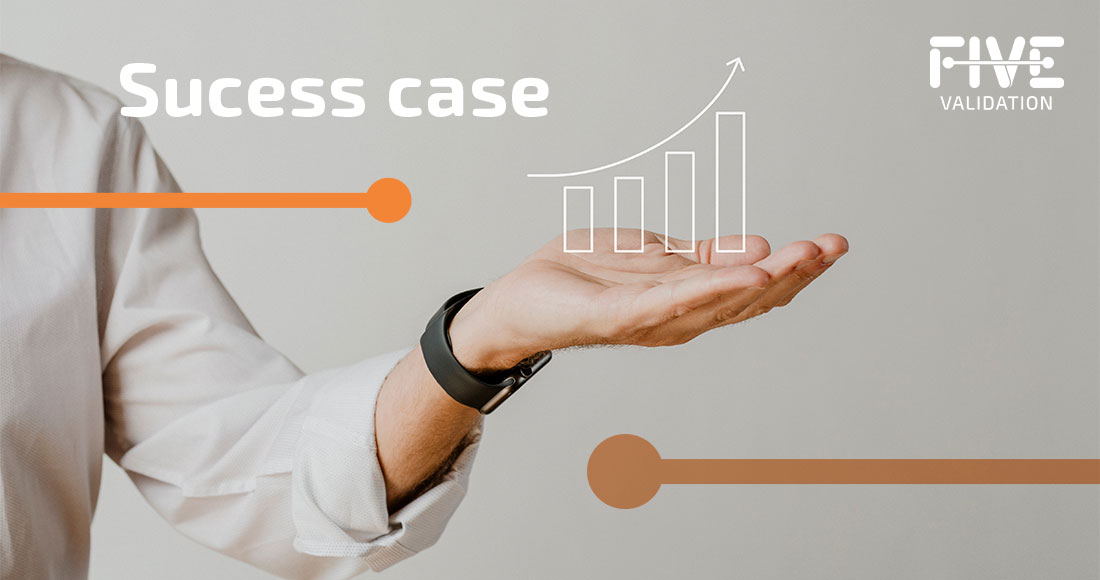
Success Case

Success Case
In 2018, FIVE had 40 projects performed on paper by 27 validation co-workers. And in 2023, using GO!FIVE®, we had more than 113 projects involving only 12 co-workers. So, if you have a team trained in validation GO!FIVE® software, you can reach the same results, and validations at least 6x faster.

Validation cycle comparison
On the graphs, it is possible to observe the differences in estimated effort when comparing the three validation models: paper, using EDMS (Electronic Document Management Software), and GO!FIVE®.
EDMS requires less effort when compared to paper, but the difference is not so significant, because despite speeding up review and approval workflows, the system is not built and designed for validations, as is the case with GO!FIVE®.
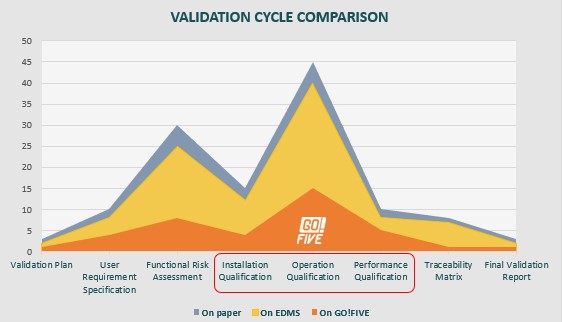
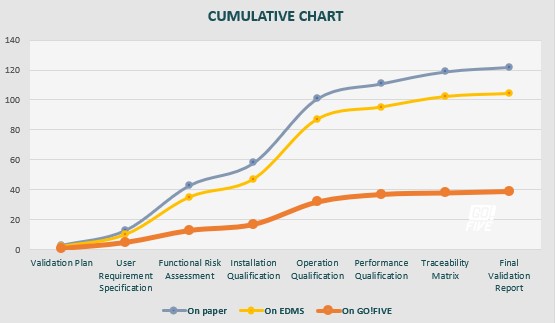
No mechanism for test executions
In general, companies end up having to print out the approved test protocols and scripts to be ran manually and transformed into electronic format again, by scanning them after a performed test. They then upload the scans into EDMS. Chances of human error are enormous.
Absence of Automatic Traceability Matrix
EDMS does not automatically generate any kind of traceability matrix. This type of system is not designed to link risks and requirements to tests. Manual construction or drafting of this document is possible, but extremely time consuming, therefore expensive, and likely subject to human error.
Insufficient Information for the Management of Validations
EDMS has appropriate information for the quality control of documents because they are platforms for this purpose, but they lack the necessary information for decision-making by the management of validations and qualifications. For example, such does not show the number of tests performed, failed or incidences to be closed, and management of the validation status.
Lack of Accelerating Library (Pre-Prepared Validations as Examples)
EDMS does not have a database of stored information to contribute to the speed of the process of preparing the contents of the validation nor the qualification documents. Such are not the objectives of this type of system.

• ROI Calculation
• How much will it cost?
FIVE's business model consists of monthly payments for making available the tenant section area for each client (i.e., a separated database section for each company). The client is not obligated to remain a tenant and may break the contract at any time by giving 30 days’ notice.
The FIVE Validation sales team informs the value according to the need that one enters into the spreadsheet field as a starting point for ROI calculation.
The great difference of the tool is that, besides the client having the possibility to select several libraries according to the process or system they intend to validate, this database inherently has risks, as well as requirements and tests in compliance with GMP practices, regulatory requirements, and much more. There are constant updates and improvements in the functionalities and libraries because the solution is born from a specialized company, in which its own specialists are also users of the platform.
• How much money will I save?
We support our clients in the return-on-investment study that GO!FIVE® can provide. The FIVE Validation team has an interesting and robust template where one can enter data on current costs with printers, scans, physical and electronic storage of documents, costs with internal and outsourced labor.
The study considers the classification of various validation disciplines (processes, cleaning, computer systems, equipment qualification, utilities qualification, spreadsheets, etc.). In study groups by high, medium, and low complexity, the study includes the rationale used by the FIVE Validation technical team for such classifications, as well as including data and efforts involved in performing validations manually compared to GO!FIVE® for proper ROI study.
Implementing paperless validation management software can bring several benefits to your organization.
One of the main and most tangible ones are the hours spent by the team members involved, including your analysts, key-users, quality members, and information technology personnel, for example.
The time saved may be due to easier documentation development, since there are several libraries, electronic review and approval workflows, easy testing, and reporting. In addition, you can track the team's performance in real time via dashboard and access to project status.
There is no need for printing at any stage of the validation.
If you want to learn more about the advantages and benefits of the system, click here and see the 10 benefits of digital validation with GO!FIVE®.
If you would like to have an ROI study performed for your company, please contact our experts at [email protected]
